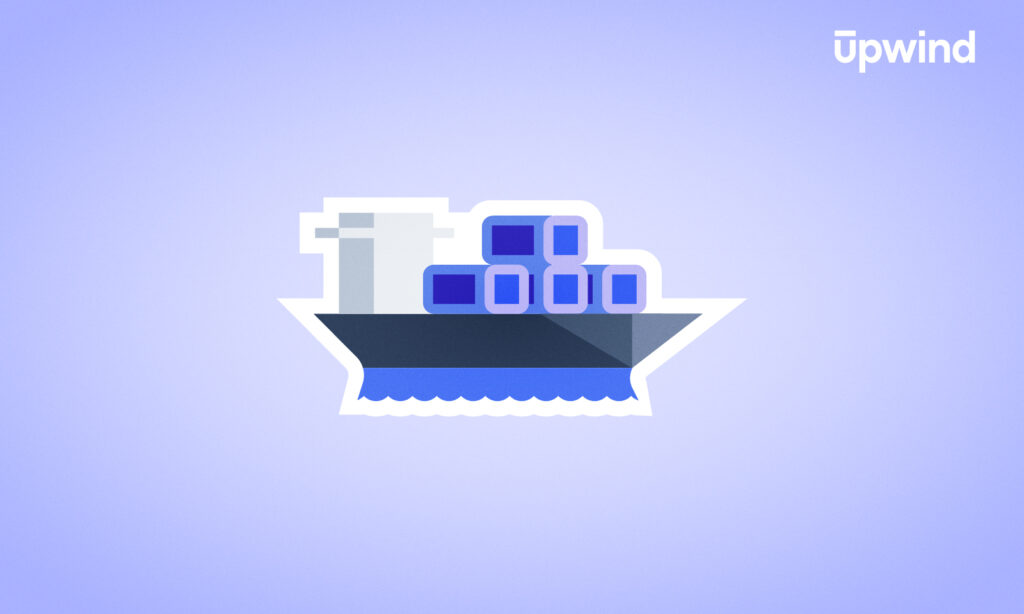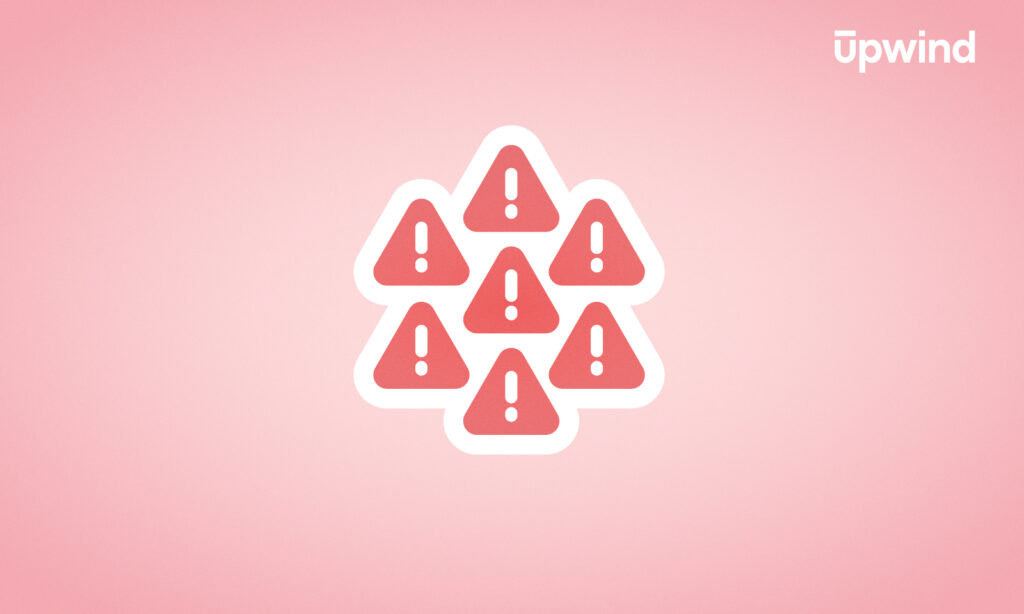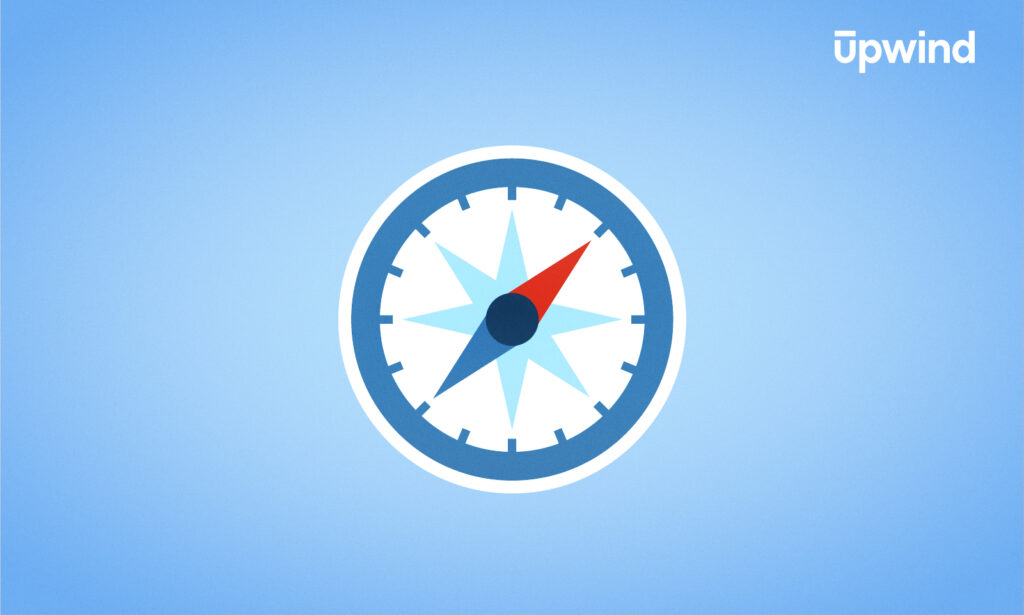
Some of the earliest cloud security solutions were cloud security posture management (CSPM). Today, these modern tools are still a cornerstone of cloud security, but many teams worry about how they’ll integrate posture management functions with all the other security tools their growing cloud architectures require. This article will deep dive into the role of CSPM in cloud security, including key features that organizations should look for when evaluating tools.
The Basics: What is Cloud Security Posture Management (CSPM)?
Cloud Security Posture Management (CSPM) is a set of practices to monitor configurations across a cloud environment. It includes using tools to help companies account for assets, detect misconfigurations, and address security risks automatically.
In public cloud environments like Amazon Web Services, Google Cloud Platform, Oracle Cloud infrastructure, Microsoft Azure, or even a multi-cloud combination, these tools detect misconfigurations caused by both internal actions and changes from cloud service providers. They quickly handle issues such as excessive permissions, unused resources, and encryption failures.
How Important are Posture Management Tools?
CSPM is foundational in cloud security. The modern business landscape increasingly relies on cloud solutions to enhance agility and support digital transformation efforts. However, as organizations scale their cloud infrastructure across multiple providers, they face greater security challenges. Posture management tools have become a key part of the security strategy, helping DevSecOps deploy more secure products without more time-consuming processes. That helps teams stay afloat in an expanding cloud architecture.
“Seventy-five percent of companies today have adopted a multi-cloud architecture, up from 49% in 2017,” according to Gartner.
Companies that want applications, data, and workflow to scale efficiently and reach a global audience increasingly deploy key business functions in the cloud — often in several. As they harness the specific advantages that different platforms have to offer, they have utilized these tools to make their ever-more complicated spaces secure.
What are the Benefits of CSPM?
Posture management is core to improving security and compliance. DevSecOps gains several benefits, which we will dive into below.
Visibility into cloud resources
Posture management offers a window into cloud stacks from a single location, including changes made to any and all cloud resources.
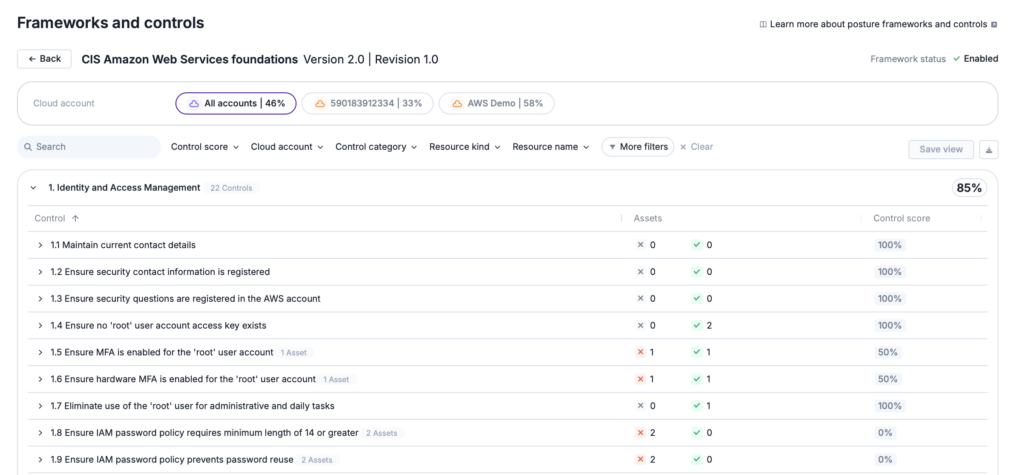
The centralized visibility reduces the manual effort required to track down misconfigurations. It also accelerates the identification of policy violations or drift, so teams can enforce governance before incidents propagate across the environment.
Ability to identify security issues
What kind of issues? In what arenas? These tools are built to detect issues from encryption to storage buckets and permissions.
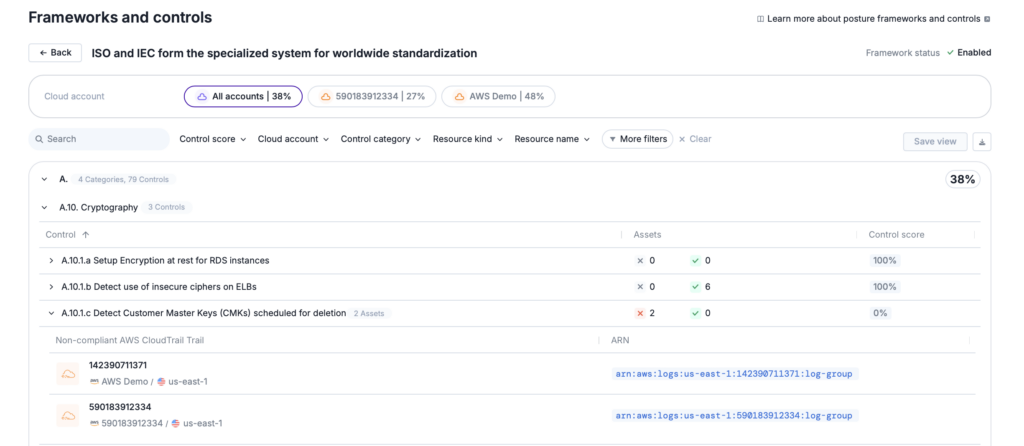
By automating the detection of misconfigurations, posture management tools reduce human error. It also provides actionable insights so teams don’t spend time chasing less critical issues.
Risk prioritization
CSPM comes with the power to prioritize so teams can address high-risk issues right away.
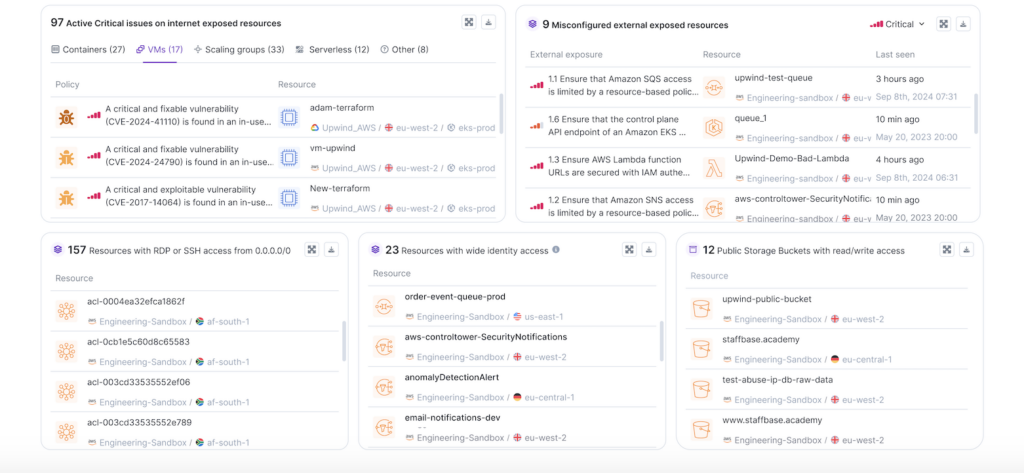
By leveraging risk-based analysis, CSPM ranks misconfigurations based on their potential impact. While it can’t make this assessment based on behaviors of your environment and assets without help from other tools, a stand-alone posture management tool can help direct teams to some of the most critical threats.
Compliance enforcement for security posture
CSPM allows for enforcing policies and security requirements, like who can access data in a secure cloud.
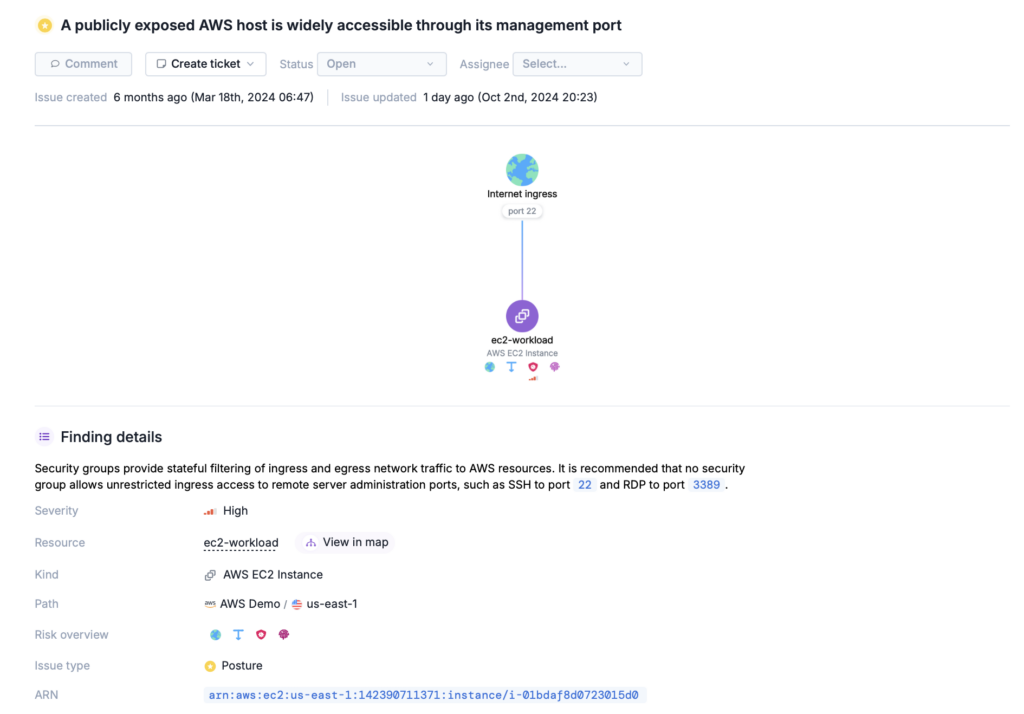
It automates enforcement by monitoring for misconfigurations, including encryption settings, storage permissions, and network configurations to comply with security standards.
Reporting to stay compliant
CSPM keeps track of security policies taken, incidents, and remediation for security audits and allows easy reporting.
The tool simplifies audit trails with streamlined reports to make manual tracking a thing of the past.
CSPM Best Practices for Cybersecurity Teams
A CSPM provides the foundation for cloud governance by continuously assessing and enforcing security policies. But in a world of multiple cloud providers, tools, and gaps in visibility, how can teams move beyond a basic setup to complete confidence in their CSPM’s technical workings? Let’s look at the CSPM’s components with some practical tips on how to ensure teams are getting the most from the tool’s capabilities.
Configuration Auditing
Configuration auditing means systematically reviewing cloud resources to ensure adherence to security policies. That includes:
- Configuration enforcement: Comparing cloud resources against security baselines, like CIS benchmarks or NIST.
- Drift detection: Monitoring for deviations from secure configurations.
- Automating policy enforcement: Integrating with Infrastructure-as-Code (IaC) templates to prevent misconfigurations from reaching production.
What can teams do?
Define security baselines aligned with organizational needs and regulatory requirements, then automate compliance checks with CSPM capabilities.
Risk Assessment and Prioritization
CSPM solutions can assign risk scores to misconfigurations based on their potential impact. And when they come alongside comprehensive CNAPPs with runtime capabilities, that data can feed smarter prioritization of misconfigurations before deployment. From contextual risk analysis to threat intelligence integration and attack path mapping, even standalone CSPMs offer ways to cut through some of the noise that misconfiguration alerts typically cause.
What can teams do?
Use prioritization tools rather than treating all misconfigurations equally. Address high-impact risks first, with attention to those exposed to public access or that could be exploited to escalate privileges.
Cloud Asset Visibility and Inventory Management
Seeing cloud assets from a single pane of glass is increasingly the foundation for securing complex cloud environments. CSPM helps by mapping cloud resources, with automatic discovery capabilities, then assessing role-based access control (RBAC) settings, detecting overly permissive roles, and often extending monitoring to cloud-native services, tracking API configurations.
What can teams do?
Update asset inventories and flag unauthorized changes. Employ least privilege access across policies to minimize exposure.
Automated Remediation
CSPM tools detect risk, but to be truly effective, they also need to remediate them. Capabilities include policy-based auto-fixes (i.e., disabling public access to an S3 bucket), IaC integration for more secure deployments, and integration with Security Orchestration, Automation, and Response (SOAR) and Security Information and Event Management (SIEM) tools.
What can teams do?
Automate remediation for high-risk issues but allow manual review for lower-priority findings to balance security with efficiency.
Implementing CSPM: A Checklist
Implementing CSPM is all about using its capabilities to the greatest extent. To maximize effectiveness, implement posture management with an eye to all its capabilities, as well as how they can work together best. Here’s how teams move through the process:
- Shift Left by putting CSPM into CI/CD pipelines to catch misconfigurations early.
- Customize risk scoring with risk thresholds based on business impact and criticality.
- Monitor multi-cloud environments with CSPM solutions that support your entire infrastructure.
- Update security policies regularly based on audits and emerging threats, as well as compliance changes.
- Automate compliance checks to align with needed frameworks like SOC 2, GDPR, and PCI DSS.
What About Protecting Security Posture?
It’s right in the name. CSPM adds to cloud security management and helps remediate cloud misconfigurations in three core ways:
- Automated security assessments
- Compliance checks
- Remediation
Let’s look deeper at example scenarios where the features of a CSPM can help.
Features of CSPM and their scenarios
Here’s a look at how each function of a posture management tool might work in the real world to alert teams or remediate an issue.
| CSPM Function | Example Scenario | Outcome |
|---|---|---|
| Automated Security Assessments | A new storage bucket is created without encryption enabled. | CSPM automatically flags the bucket as a security risk and alerts the security team. |
| Compliance Checks | A company needs to comply with GDPR regulations for data handling. | CSPM continuously checks cloud configurations against GDPR requirements, generating reports for auditors. |
| Risk Prioritization | Multiple misconfigurations are detected, including open ports and weak encryption. | CSPM assigns higher risk to the open ports, prioritizing their remediation based on potential impact. |
| Contextual Risk Analysis | A publicly exposed database is detected alongside misconfigured IAM roles. | CSPM recognizes the combination as a critical risk, escalating the issue for immediate resolution. |
| Automated Remediation | A misconfiguration allows unnecessary access to a cloud resource. | CSPM automatically revokes the unnecessary access, ensuring compliance with least privilege principles which ensure users have only the access necessary to perform their role. |
Are These Features Unique to CSPM Tools?
These solutions provide what traditional security cannot: a bird’s-eye view of the entire cloud, monitoring access points, permissions, and misconfigurations. While there are a range of security management tools to help with cloud architecture, posture management solutions are the first and only tools built for the cloud, tasked with managing a completely new environment where multiple accounts, devices, and locations come together to present new security issues and interactions.
Modern CSPM systems have become a critical foundation for securing cloud environments, offering rapid, valuable visibility into configurations and compliance. But as cloud-native applications and threats evolve, visibility alone isn’t enough. The next step is integrating that visibility with real-time insights, runtime protection, and business context to prioritize the most critical risks and eliminate alert fatigue.
Joshua Burgin | CPO, Upwind
That means there are multiple tools that can help with discrete tasks in the cloud, many of which might be confused with posture management.
CSPM solutions offer a broad, cloud-specific view of your entire infrastructure, monitoring access points, permissions, and misconfigurations—things traditional security tools cannot address. While many security management tools assist with cloud architecture, these solutions are uniquely built for multi-cloud complexity, where multiple accounts, devices, and locations introduce new security risks and interactions.
As a result, multiple cloud security tools exist for a range of discrete tasks, many of which are sometimes confused with CSPM. Take CWPP (Cloud Workload Protection Platforms). Both tools are critical in cloud environments, but they tackle different challenges.
Runtime-powered CSPM
Upwind offers runtime-powered cloud security posture, combining CSPM findings with real-time, runtime data for increased risk prioritization, proactive attack surface reduction and streamlined DevSecOps.
While CSPM focuses on cloud configuration and security posture, CWPP is designed to protect workloads, providing features like runtime protection, anti-malware, and intrusion prevention. CWPP solutions focus on the computational resources running within the cloud, such as containers, virtual machines, and serverless functions.
CSPM Vs. CWPP and Other Security Management Tools
While CSPM centers on cloud configuration, Cloud Workload Protection Platforms (CWPP) are concerned with workload protection, like runtime and anti-malware protection, as well as intrusion prevention. These solutions focus on computational power: the resources running in the cloud environment. Cloud workload security can include components like containers, virtual machines, and serverless functions.
Both CSPM and CWPP work in cloud environments. They can assess organizational structures and unique identifiers to handle tasks in the cloud.
Differentiators from other cloud security platforms
Cloud security confusion often stems from the “Cloud” prefix of multiple cloud security solutions working on different challenges with different features. Here’s a breakdown of other common acronyms in the cloud security space that differ from CSPM.
What are other tools to help secure a cloud environment? There are a few. Here are some acronyms you may have heard:
| What is it? | Deployment Model | Complementary to CSPM |
|---|---|---|
| Cloud Security Posture Management (CSPM) | SaaS | CSPM is foundational security posture management, focusing on misconfigurations in cloud environments. |
| Cloud Workload Protection Platforms (CWPP) | SaaS, on-premise | Enhances posture security by adding protection to the workload layer, ensuring workloads are secure after being correctly configured by CSPM. |
| Data Security Posture Management (DSPM) | SaaS | Ensures data-level security after the cloud security posture is secured. It helps track data compliance and risk. |
| Cloud Access Security Broker (CASB) | SaaS | Enforces access control and data policies by third-party services. |
| Cloud Infrastructure Entitlement Management (CIEM) | SaaS, hybrid | Enhances CSPM with an added layer of identity management. CIEM secures IAM configurations and enforces least-privilege access principles in the cloud. |
| Cloud Native Application Protection Platforms (CNAPP) | SaaS | Encompasses CSPM features as part of a broader cloud security platform that also handles multiple security tasks, including securing workloads. |
The Role of Remediation Workflows
Cloud misconfigurations are one of the top causes of security incidents, but visibility and detection are only part of the puzzle. To eliminate them, organizations need effective remediation workflows, resolving misconfigurations before they lead to breaches. Automated remediation in CSPM tools can help eliminate manual intervention and reduce mean time to resolution (MTTR).
How does Remediation Automation Work?
CSPM tools streamline responses with automated remediation based on predefined roles and policy enforcement mechanisms. It:
- Detects and classifies misconfigurations, assigning a risk score.
- Triggers a remediation workflow based on severity and policies. It can autocorrect minor misconfigurations, for example, but also escalate higher-risk findings to teams.
- Automates and semi-automates fixes, integrating with cloud providers to revert, quarantine, or modify configurations.
- Validates remediation, verifying the applied changes and logs the event for compliance audits.
Finding the balance between human intervention and automation is key. Here are different types of remediation workflows:
- Fully Automated Remediation: For low-risk, high-frequency misconfigurations. It’s ideal for enforcing storage encryption policies, revoking public exposure, and correcting security group misconfigurations.
- Approval-Based Remediation Workflows (Human-in-the-Loop): This workflow is best for higher-risk issues and providing context-aware recommendations, like revoking administrator privileges when the move could disrupt active workflows, break deployments, or cause downtime.
- API-Driven Remediation with Security Orchestration: Some CSPM tools integrate with SOAR platforms or IaC pipelines for security automation at scale. This workflow is flexible and customizable; it can adjust to usage data and business logic and evaluate risks dynamically. It’s better for high-risk or complicated scenarios. It’s fast, but business-critical changes may still require human intervention.
Upwind Empowers Organizations with Data Security for their Cloud Infrastructure
CSPM solutions are a front-line defense against security breaches that have increased year over year, breaking records in 2023 when 3,205 breaches prompted companies to up their security spending to their own record levels — companies are projected to spend $215 billion in 2024 to prevent breaches.
“Security must be job zero – embedded into every facet of DevSecOps, from how code is built and deployed to how risks are managed. Organizations need a comprehensive platform that brings together CSPM, runtime, API security, and more to deliver complete, focused protection.”
Joshua Burgin | CPO, Upwind
The growing threat isn’t simply the tenacity of bad actors; it’s the increasing complexity of cloud environments and the difficulty that security teams have in seeing and fixing real issues before they become threats.
Get a better view of your cloud landscape with Upwind. Schedule a demo to see how.
FAQ
Is CSPM part of SASE?
No, CSPM isn’t usually a core component of Secure Access Service Edge (SASE). However, they can complement each other in a holistic cloud security strategy, where CSPM focuses on cloud misconfigurations while SASE provides network security with wide-area networking (WAN).
When is CSPM not enough?
A typical CSPM provides security around misconfigurations and compliance. It doesn’t usually offer real-time threat detection, remediation of active issues, or insight into vulnerabilities, malware, or secrets in cloud workloads. Organizations will also benefit from runtime security, which is why Upwind includes CSPM functions that help secure the cloud, but also workload and app vulnerability management.
What is CSPM in Azure?
CSPM in Azure primarily refers to the cloud security provided via Microsoft Defender for Cloud. Basic features apply to all Azure users, but CSPM capabilities in Azure differ by plan, and CSPM in Azure won’t cover security for other clouds. Users augment CSPM in Azure with 3rd-party CSPM solutions that can offer visibility into multi-cloud environments, advanced runtime insights, and customization.
Is CSPM free?
Some basic platforms are free, like CSPM in Azure, with basic features for Azure users, or the open-source Magpie. Free posture management features can include asset inventories and security scores. Paid solutions offer much more, from flexibility and integration to advanced runtime insights and prioritization of issues based on runtime behavior.
What are the risks of CSPM?
The risks stem from tool limitations and security gaps created when tools can’t cover your entire ecosystem. These platforms come with a limited scope, focusing primarily on misconfigurations and compliance, so a primary risk is the failure to identify real-time threats and address them quickly. Even with limited visibility, posture management solutions may lead to alert fatigue, flagging multiple issues without prioritizing those that are truly critical and overwhelming teams tasked with fixing issues.
What is the difference between CSPM and CNAPP?
The difference lies in the focus and scope of each tool: A CSPM handles configuration and compliance. A cloud-native application protection platform (CNAPP) offers broader coverage and can integrate CSPM, cloud workload protection (CWP), runtime protection, and vulnerability management. A CNAPP secures the lifecycle of cloud applications from development to runtime.
What is the difference between CWP and CSPM?
Cloud workload protection (CWP) protects workloads and applications running in the cloud. That includes virtual machines, containers, and serverless functions. However, these cloud components are not the cloud itself. That’s where CSPM comes in. It secures the cloud structure, ensuring secure configurations and managing compliance.
What is an example of a CSPM tool?
AWS Security Hub, Microsoft Defender for Cloud, and Google Cloud Security Command Center are all native examples of CSPM tools that integrate deeply with their respective ecosystems for visibility and remediation. Popular third-party tools are also available to cover multi-cloud setups, along with advanced analytics and integrations. There are also open-source options, though they’ll require customization. Core feature sets include asset visibility, risk prioritization, and automated remediation workflows, with market leaders differentiating with machine learning, API-based automation, and governance controls.
What is next for CSPM tools?
The next evolution of CSPM tools will focus on deeper AI/ML integration for better risk detection and scoring, automated remediation for faster response, and real-time monitoring to reduce dwell time for cloud threats. As security teams embrace zero trust and identity-based security, CSPM will continue to evolve beyond static misconfiguration checks to enforce least privilege access more dynamically.
Multi-cloud management will be an increasing priority, and tools will expand their support for sprawling, complicated environments across cloud, hybrid, and on-premise infrastructure. They’ll also increasingly offer DevSecOps integration for earlier detection and less redundancy for development teams. This shift reflects shift-left security, where CSPM prevents misconfigurations before deployment, but with vastly improved noise reduction from integrations and tools to assess real risks.
How do you implement cloud security posture management?
Implement CSPM with the following checklist:
- Complete a comprehensive asset inventory to identify resources, accounts, and providers.
- Establish a security baseline. Policy development should align security controls with business needs.
- Define configuration standards and compliance needs. Compliance mapping should connect needs with frameworks like NIST or SOC 2.
- Prioritize vulnerabilities with a risk assessment.
- Set up monitoring with alert configuration so that issues are caught and remediated in real-time.
- Plan for team training so developers and security teams alike understand policies and response workflows.
- Consider integration planning to connect CSPM with SIEM, SOAR, and DevSecOps pipelines for security that’s deeply embedded in governance and coding.
Why do cloud misconfigurations occur?
Cloud configurations occur because of human error, insecure default settings, and the challenges inherent in a complex environment.
For example, the speed of rapid deployment can lead teams to prioritize functionality over security, while multiple stakeholders, from developers to third-party vendors, can introduce contradictory configurations.
Legacy systems may lack cloud security controls. Shadow IT, with employees deploying resources outside official oversight, can increase exposure.
Finally, a lack of expertise in cloud security can compound these issues. Even well-configured environments are subject to configuration drift, where unintended changes grow over time.
What is the difference between CASB and CSPM?
Cloud Access Security Brokers (CASB) is a security tool that sits between users and SaaS apps. It’s SaaS-focused and involves monitoring interactions to manage access control, data security, and shadow IT discovery, detecting user behavior anomalies.
Cloud Security Posture Management (CSPM) is a tool with added breadth, securing IaaS and PaaS environments by continuously assessing cloud configurations and checking compliance status. CSPM primarily addresses security risks in infrastructure.
What is the difference between CSPM and CIEM?
Cloud Security Posture Management (CSPM) secures cloud infrastructure, monitoring cloud configurations and enforcing compliance across infrastructure, workloads, and networks. It provides visibility into cloud assets and enforces security baselines so teams see fewer misconfigured storage, networking, or encryption settings.
Cloud Infrastructure Entitlement Management (CIEM) also protects cloud-native assets, but it is centered around identity management, permission analysis, and access governance. CIEM tools use privilege monitoring to remediate risky entitlements. CIEM specializes in cloud identities and permissions, providing detailed permission analysis, identity lifecycle management, and granular access governance.
Can CSPM be integrated with other cloud security tools?
Yes, CSPM can be integrated with other tools for added visibility, automation, or improved security workflows.
Through API connections, CSPM integrates with SIEM systems to centralize event logging and correlate misconfigurations with broader threat intelligence. It can also work with identity management solutions and CIEM to enforce more granular identity and access policies.
For DevOps, CSPM integrates with CI/CD pipelines and DevOps tools to detect misconfigurations at the build phase.
CSPM is also part of CNAPP solutions, which extend its capabilities to workload protection, runtime monitoring, and entitlement management. As CSPM is packaged with other tools or considered alongside them, teams must assess whether their needs are met with a standalone solution or whether it’s worth combining tools for added capabilities.
How does CSPM help with compliance and governance?
CSPM continuously assesses the cloud environment against compliance standards and regulatory frameworks such as CIS, NIST, SOC 2, GDPR, and PCI DSS, for policy enforcement across the cloud.
Through continuous monitoring, CSPM offers real-time visibility into security posture and thus helps prevent drift from approved configurations. Audit trails are another advantage of CSPM, offering records of all security-related changes in the environment, creating a record of misconfigurations, fixes, and access modifications for compliance validation.
This evidence collection simplifies security audits with reports that document adherence. CSPM’s risk reporting highlights compliance gaps, too, so teams can proactively address compliance concerns.
What are the unique benefits of managing CSPM through a CNAPP?
Managing CSPM through a CNAPP means security with unified capabilities that can all complement one another with seamless integration. For instance, a CNAPP provides unified visibility across infrastructure, apps, and identities, eliminating blind spots. But with integrated workflows and centralized management, teams can address misconfigurations, vulnerabilities, and threats from a single platform — making use of runtime insights they may not otherwise see.
Lifecycle coverage means security from development to runtime, so compliance checks are embedded in the CI/CD pipeline, while runtime protection detects drift and active threats. Vulnerability correlation means CNAPPS can help teams prioritize vulnerabilities with active exploits, minimizing noise from misconfiguration alerts.
Teams can also manage resource optimization with data on how apps and workloads are operating in live environments. In short, when teams need both buildtime and runtime security, integrating their functions can lead to a more unified security stance than deploying each capability from separate tools.



